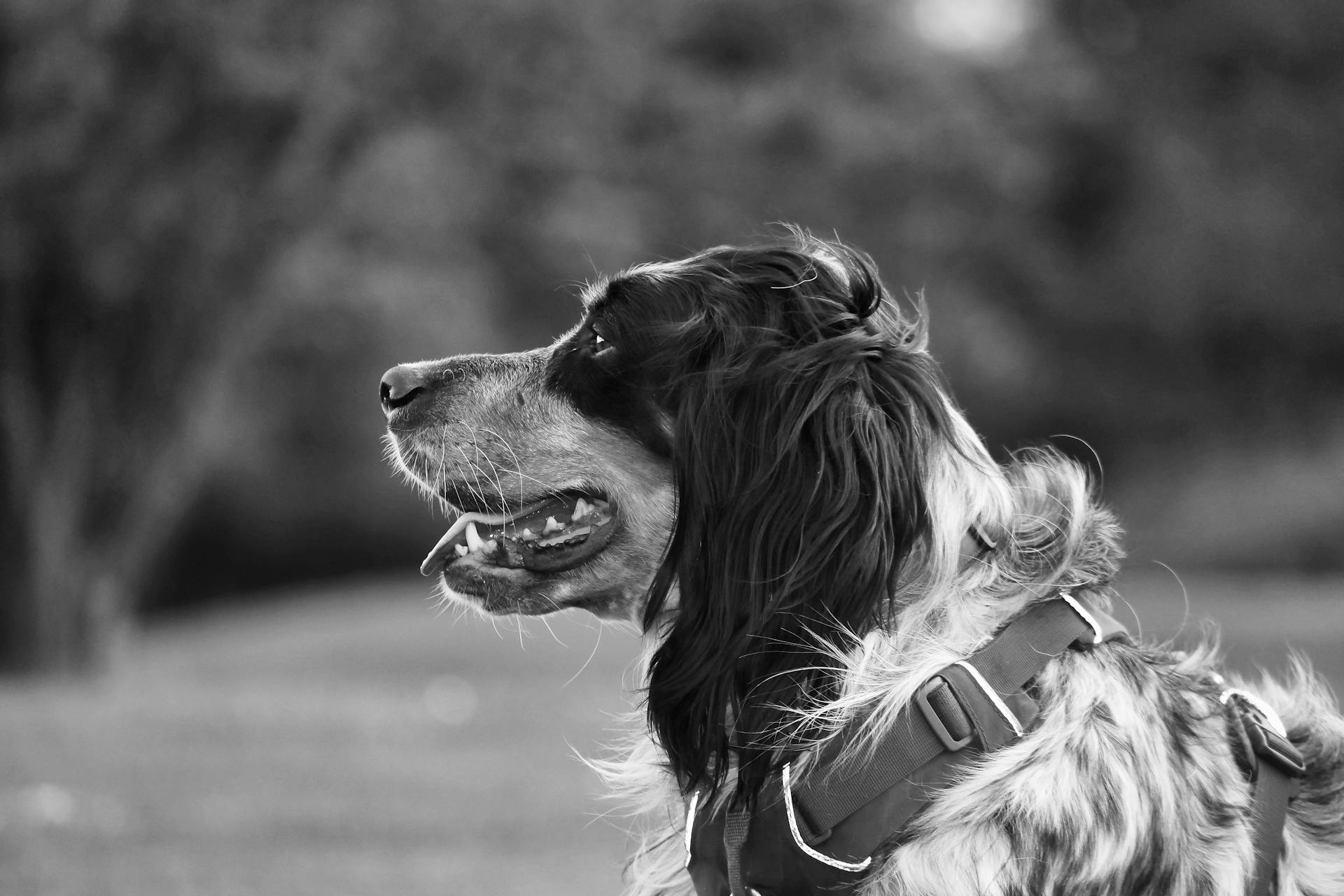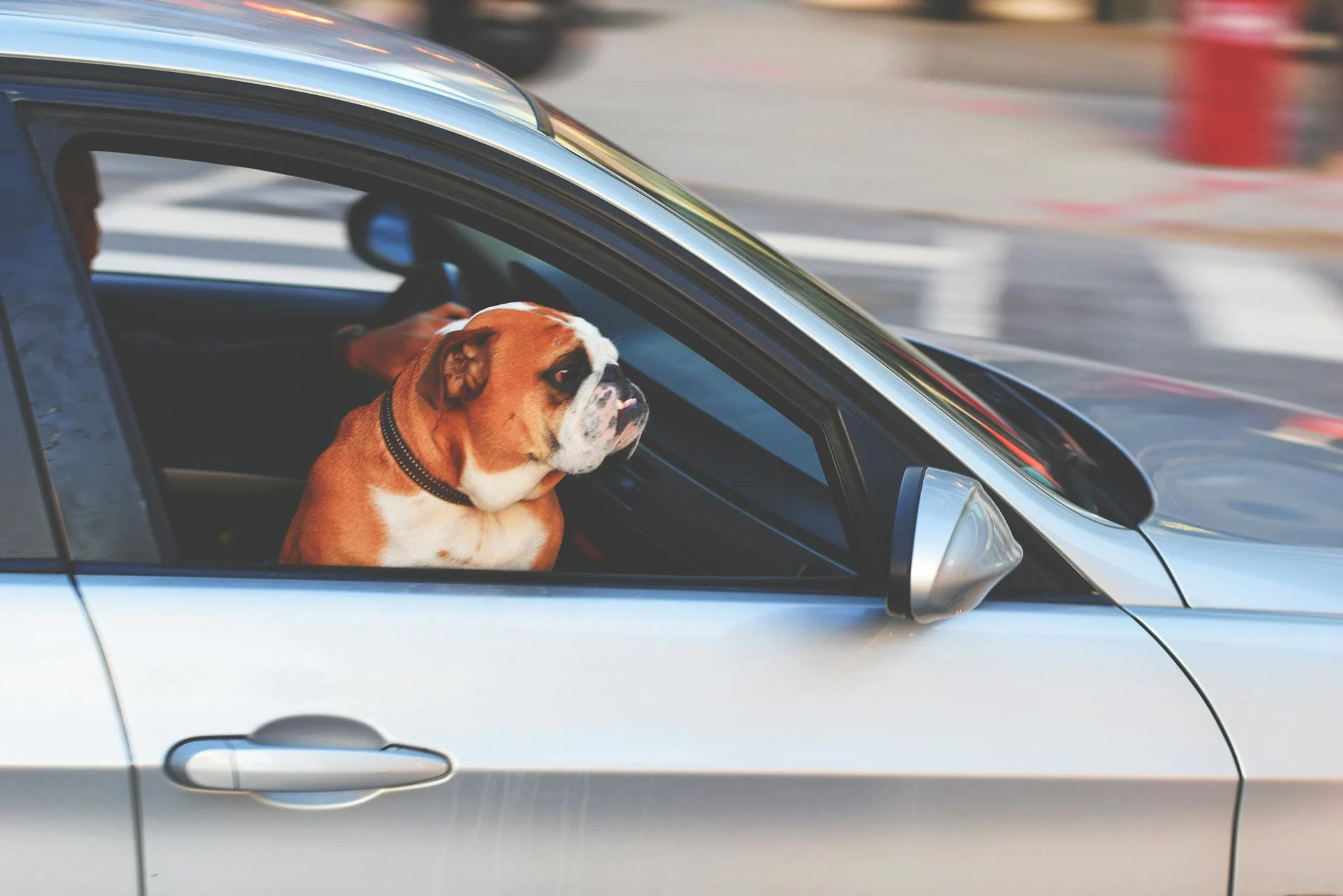
If you're considering bringing an English Setter or Irish Setter into your home, you'll want to know what to expect. Both breeds are known for their friendly, outgoing personalities.
English Setters were originally bred to hunt in packs, so they're naturally social and love to be around people. They're also highly energetic and need regular exercise to stay happy and healthy.
Irish Setters, on the other hand, are often described as "velcro dogs" because of their strong attachment to their owners. They thrive on attention and affection, making them great companions for families.
In terms of grooming, both breeds have a medium-length coat that requires regular brushing to prevent matting and tangling.
Animal Care
English Setters are an active breed that needs regular exercise and outdoor activities to stay physically and mentally stimulated. They thrive on human companionship and form strong bonds with their family.
To prevent knots and tangles, brush your English Setter's long coat at least two to three times a week. This will also help prevent matting and tangles, as mentioned in the considerations for pet parents.
English Setters are intelligent and sensitive dogs that respond well to positive-reinforcement training methods. This approach is key to helping them become well-adjusted companions.
Socializing English Setter puppies is essential to ensure they grow up to be well-adjusted companions. This involves introducing them to new people, places, and experiences to help them develop good social skills.
Here are some key considerations for pet parents to keep in mind when caring for an English Setter:
- Active playtime is a must for English Setters.
- Their long and silky coat requires frequent grooming.
- Positive-reinforcement training methods work best.
- Socializing English Setter puppies is crucial.
Nutrition and Feeding
English Setters have specific nutritional needs, and choosing the right dog food is crucial. Choose a dog food that meets the standards set by the Association of American Feed Control Officials (AAFCO).
Puppies need to eat frequently, with three or four meals a day on a regular schedule. Free-feeding is never recommended, as it can contribute to obesity.
The amount of food your pup needs varies greatly from dog to dog, depending on their weight, age, health, and activity level. Your vet is the best resource for determining the right portions.
English Setters are prone to joint issues, so joint supplements may be beneficial. Always talk to your vet before giving your dog supplements.
Smaller, more frequent meals can help minimize the risk of bloating and stomach problems in English Setters.
Behavior and Training
English Setters are generally friendly and sociable dogs, making them well-adjusted and confident companions.
They are naturally inclined to explore their surroundings, so having a fenced-in yard is essential for keeping them safe. Otherwise, they might wander off in search of an interesting scent.
Patience is key when training an English Setter, as they can be easily distracted by birds and other stimuli. Consistency and patience are crucial when using positive reinforcement methods, such as praise, treats, and rewards.
Early socialization and training are essential to develop a well-mannered and well-adjusted dog, and a calm and gentle approach will help them thrive.
Check this out: How Old Are Male Dogs When They Can Mate
Behavior
English Setters are generally friendly and sociable, making them well-adjusted and confident dogs. They are not typically known to be anxious, fearful, or excessive barkers, aside from the occasional bark to alert you to something unfamiliar.
Having a fenced-in yard is essential for keeping English Setters safe, as they are naturally inclined to explore their surroundings and can be curious about new sights and smells. They might wander off in search of an interesting scent if left unsupervised.
Patience is key when training an English Setter, as they can be easily distracted by birds and other stimuli. This means that training should be done with positive reinforcement methods, using praise, treats, and rewards to motivate and encourage desired behaviors.
English Setters are sensitive dogs and don't like being left alone for long, so they thrive on attention and affection from their human family. A usually quiet English Setter will bark to let you know if someone unfamiliar is approaching.
With their friendly and easy-going nature, English Setters make excellent friends for children and other pets, but a home with feathered pets might not be a good fit due to their history as bird dogs. They are generally easy to get along with, but socialization and habituation are crucial to prevent overwhelming them.
You might like: Are Labrador Retrievers Easy to Train
Exercise Needs
English Setters need a lot of exercise, several hours a day to stay happy and healthy.
Walking is a must, but pavement walks won't cut it - they get bored with that pretty quickly.
Breed Information
The English Setter is a gentle, elegant dog known for its beauty and grace. It originated in England in the 19th century and was developed primarily for bird hunting and retrieving.
Their stunning long and silky feathered coat gives the breed a majestic appearance, and it comes in various color combinations, including white with speckles of black, blue, lemon, or orange.
English Setter dogs stand 23–27 inches tall and can weigh anywhere between 45–80 pounds.
Breed Information
The English Setter breed has a rich history dating back to the 19th century and was developed primarily for bird hunting and retrieving.
This breed's practice of crouching low, or "setting", when they hunt game gives the dogs their name, according to the English Setter Association of America (ESAA).
The English Setter has a stunning long and silky feathered coat, giving the breed a majestic appearance.
English Setter dogs stand 23–27 inches tall and can weigh anywhere between 45–80 pounds.
The English Setter's name comes from their instinctive tendency to crouch, or "set", when they find their quarry, which was useful in hunting with nets in the past.
Despite being a gentle breed, English Setters can be quite boisterous in play and may not be suitable for very small children or dogs.
English Setters are patient and tolerant, but they would prefer a quieter, more mature home.
History and Origins
The English Setter has a rich and complex history that spans centuries. The breed's roots go back to the 1500s in England.
The exact history of the English Setter is unclear, with many variations in records and accounts. This is because landowners in the area were in competition with each other to develop their own specific Setter breed.
It's likely that the English Setter is an offshoot of various land spaniels brought over from Spain. The breed may also have been influenced by water spaniels, pointers, and springer spaniels.
Sir Edward Lavarack is often credited with establishing the English Setter as a distinct and recognized breed.
Irish
The Irish Red and White Setter and Irish Setter are two breeds that originated in Ireland, and they share some similarities. They're both medium-sized dogs with athletic builds, but the Irish Red and White Setter is stockier than the Irish Setter.
The Irish Red and White Setter stands 24.5 to 26 inches tall for males and 22.5 to 24 inches tall for females, while the Irish Setter stands 27 inches tall for males and 25 inches tall for females. This makes the Irish Setter slightly taller than the Irish Red and White Setter.
Both breeds have beautiful coats, but they differ in color and length. The Irish Red and White Setter has a medium-length double silky coat with pure white and red patches, while the Irish Setter has a flowing brilliant coat that's mahogany or chestnut in color.
These breeds were both developed for hunting, with the Irish Red and White Setter originating in the 1600s to hunt gamebirds and the Irish Setter bred in the 1800s to run swiftly through the Irish countryside to locate upland game birds.
Health and Wellness
English Setters are prone to hereditary eye disorders, so regular eye testing is a must to ensure their vision stays clear.
Hip dysplasia is another common issue that can lead to mobility problems, making it essential to have your dog's hips scored before breeding.
Deafness can also occur in English Setters, but fortunately, it can be tested for from a young age.
Regular exercise is crucial for English Setters, who need to stay physically and mentally stimulated.
They're quiet indoors, but they'll thrive with regular outdoor activities and interactive games.
English Setters form strong bonds with their family and are great with children, as long as they're properly socialized and introduced.
Their long coat requires regular grooming, with brushing at least two to three times a week to prevent knots and tangles.
With proper care and attention, English Setters can live happy, healthy lives.
General Information
The English Setter and Irish Setter are both beloved breeds with rich histories.
The English Setter was originally bred in England in the 16th century for hunting small game.
Their friendly and outgoing personalities make them a great fit for families with children.
The Irish Setter, on the other hand, was bred in Ireland in the 19th century for hunting large game.
Both breeds are known for their stunning coats, with the English Setter's coat being a combination of flat and feathered, while the Irish Setter's coat is long and flat.
Intriguing read: Game Bred American Pit Bull Terrier
Grooming Guide
English Setters have a beautiful long, silky coat in various color combinations that require regular upkeep to keep their skin and coat healthy.
They need a reasonable amount of grooming and trimming to keep them looking at their best, which involves regular trimming of the hair between their pads and under their ears.
Allowing air into their ears is crucial to prevent infections from developing.
Regular attention to the feathering is also necessary to keep it looking its best. If you plan on showing your English Setter, be prepared to provide even more attention to their grooming.
You might enjoy: When Is the Best Time to Breed a Dog
Did You Know?
English Setters display a unique coat pattern known as "Belton", which is also seen on Welsh Cobs and Clydesdale horses.
This pattern is quite old, and it's fascinating to note that it's been around for centuries.
Some litters of show bred puppies exhibit this freezing crouching behaviour almost as soon as they can walk!
It's not just limited to English Setters, as other breeds like Welsh Cobs and Clydesdale horses also display this unique marking pattern.
Frequently Asked Questions
What is the difference between an Irish Setter and an English Setter?
Irish Setters are larger and more athletic than English Setters, requiring more exercise. They share a similar hunting and tracking ability, but with a distinctively striking red coat
Which setter is the calmest?
English Setters are known for being the calmest of the setter breeds, making them a great choice for families and individuals seeking a relaxed companion.
What are the four breeds of Setters?
The four breeds of Setters are the Irish Setter, Gordon Setter, English Setter, and Irish Red and White Setter. These breeds are known for their hunting ability and loving family nature.
Which setter is the best family dog?
The Irish Setter is a great family dog due to its sweet nature and compatibility with children and other dogs. It's a great fit for many families looking for a friendly and welcoming breed.
Can English Setters be red?
No, English Setters are not typically red, as their recognized colors are blue, orange, lemon, or chestnut belton. If you're interested in learning more about this breed's coat colors, check out our breed guide.
Featured Images: pexels.com


